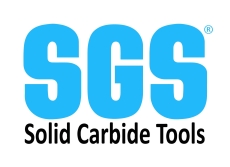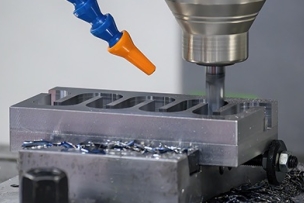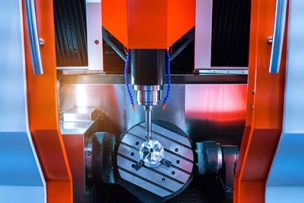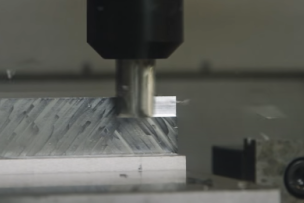KYOCERA SGS Precision Tools, Inc., formerly known as the SGS Tool Company and a wholly-owned subsidiary of KYOCERA Corporation, was originally founded in 1951 and is an ISO-certified leader of round solid carbide cutting tool technology for the aerospace, metalworking, and automotive industries. Today, it is best known for its solid carbide high performance end mills and drills. However, it is also well known for its stainless steel medical tools and technically advanced, proprietary PVD coatings. KYOCERA SGS Precision Tools, with manufacturing sites in the United States and United Kingdom, aggressively services its customers through a global network of Sales Representatives, Industrial Distributors, and Agents that sell into more than 60 countries.
Questions with Jake Rutherford
1. How does Dynamic Milling (DM) differ from a conventional offset toolpath, and why choose it?
Ask when, not why. Neither is a perfect toolpath for every operation, both have their advantages. There is a lot to consider when deciding between them. The most important of which is machine capability. DM is used for deep axial and light radial cuts and requires a high acceleration/deceleration machine with good look-ahead capabilities for the code-heavy programs. Without this, you may not get the programmed feed rate. Offset toolpaths are for heavier stepovers and shallower cuts requiring a robust machine and fixturing. Other capabilities are usually less crucial.
2. What kind of tool would you choose for DM and how would it differ from a tool for an offset toolpath?
If you were to use an offset toolpath, you would commonly use a 2-5 flute tool, like our Z-Carb AP or Z-Carb HPR, that has more chip space and can take heavier stepovers. With DM, you would use something with more flutes, like our series 51 T-Carb 6 flute end mills, so a chip thinning approach can be applied to the operation.
3. If you can run a higher feed rate with more flutes, is the highest number of flutes always the best tool option for a DM operation?
Not in every scenario, there is a tradeoff that needs to be balanced. You can run a higher feed rate with more flutes, but more flutes would mean less chip space, forcing you to either decrease the chip load (slowing down your feed rate) or your step over. Insufficient chip space can cause chatter, chip packing, or tool failure/breakage. A high feed rate is great, but a higher feed doesn’t always directly correlate to a faster cycle time. Your MRR can be increased by decreasing your feed and increasing the radial depth of cut. The open flute structure of any of our tools designed for dynamic milling allow for increased chip space and radial width of cut at accelerated feed rates.
4. What advantage do chip breakers provide when DM?
The deep axial cuts and the long flute length needed for those cuts result in a long chip that, if not cleared away, can be re-machined causing premature tool chipping/failure (they can also clog up chip augers/conveyers). Chip breakers are added to break those long chips up into shorter, more manageable chips, making them easier to remove them.
5. Is DM the best machining style for all material groups?
I’d say it is less material specific and more feature specific. As mentioned earlier, neither style is perfect for every operation. DM is the best style for deep axial cutting, while an offset toolpath may be best when you have a shallower feature at hand. Some materials are easier to machine than others, but a more machinable material may give you the freedom to take a wider cut or run a higher feed rate.
Find out how KYOCERA teamed up with MSC Industrial Supply to save an end user over $400K annually by dramatically reducing cycle time and increasing material removal rate in this Case Study.
To learn more about how dynamic milling can improve your operations, watch the following two short videos:
5 reasons why your cutting process can benefit from a trochoidal approach.
Trochoidal pocketing with the Z-Carb high-performance rougher.
Previously Featured in Aerospace Manufacturing and Design.








Talk to Us!
Leave a reply
Your email address will not be published. Required fields are marked *